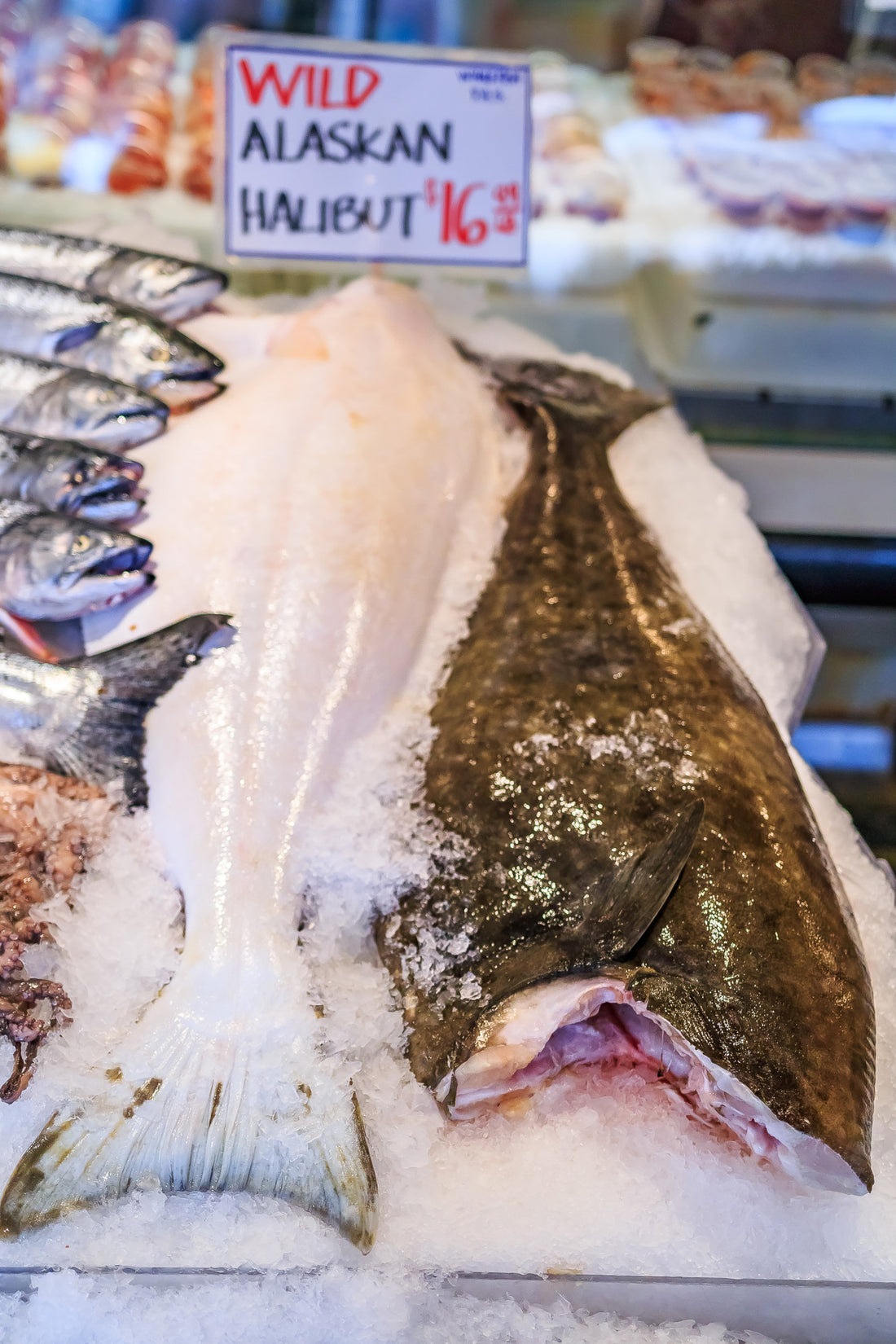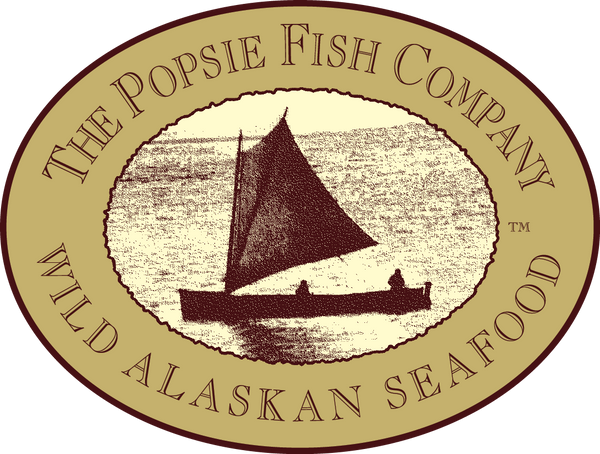
How Do I Cook Halibut?
Many Alaskans will tell you that halibut is their favorite fish. With its fine, firm, flaky meat and mild taste, it is wonderfully versatile. Whether you serve it baked, pan-seared, broiled or steamed, in tacos, chowders, casseroles or salads, it is always a crowd-pleaser.
These tips will teach you how to prepare Alaskan halibut so that you can enjoy it at your dinner table whenever you want a delicious meal.
What Is Alaskan Halibut?
Alaskan halibut, Hippoglossus stenolepis, are large, deep-ocean flatfish related to flounder. Also called Pacific halibut, they are native to the Pacific Ocean and can weigh up to 400 pounds.
The vast majority of these fish live in and around the Gulf of Alaska. Since Alaskan halibut are strong swimmers living in turbulent waters, you can expect the fish to be lean and fit. This makes for an excellent and nutritious low-calorie meal on your dinner plate. It's a crowd-pleasing fish, similar to tilapia in its versatiliy.
How to Prepare Fish for Cooking
When you're interested in preparing halibut and bringing it to your dinner plate, it's helpful to consider your options. Because it's such a versatile fish and can take on so many flavors, there are many ways to cook it. Your choices will determine the taste, texture, and appearance of your fish dish. Here are some tips to guide you:
Purchase the Highest-Quality Fish You Can Find
Your first priority is to find the highest-quality halibut you can buy.
Shop with a quality seafood provider that can sell you fresh, wild-caught Alaskan halibut, like The Popsie Fish Company. This way, you will get the most bang for your buck and will also be the most pleased with your food. On-line stores can now provide you with fish that are flash frozen - thus retaining their premium quality, just-caught taste. These fish are vacuum-packed in individual serving sizes and shipped to your door frozen solid, packed in dry ice.
Steer clear of your average grocery store fish. Those fish may be labeled "fresh," but you'd need to inquire as to how fresh they are. It's difficult for a chain store to obtain fresh-caught fish and sell them on the same day. Instead, they may be labeled "previously frozen," in which case they have been thawed. That allows only a short window of time before they must be cooked and served. The uncertainty of provenance - where and when the fish were caught and how they were transported to market - should make you cautious.
If you happen to live in Homer, Alaska, the "halibut capital of the world," by all means buy your fish there, off the dock or in the nearby shops and restaurants selling or serving it fresh. It's a treat you'll never forget! Any other Alaskan halibut port will provide you with great fish, too. But otherwise, for the highest quality wild Alaskan halibut, it's best that you shop with companies that source, flash-freeze, package and ship this versatile, tasty, powerhouse of protein right to your door.
With a premium quality fish, you'll enjoy all of its nutritional benefits. Halibut is one of the finest sources of omega 3 fatty acids, protein, minerals and the fat-soluble vitamins, A, D and E. These nutrients decrease inflammation and reduce the risk of heart attack, stroke, obesity and hypertension.
When you cook Alaskan halibut that you've chosen for its high quality, you're getting an incredible source of lean protein and other nutrients that can help you meet your health and fitness goals.
Consider Your Cooking Method
Halibut is endlessly versatile, so each cooking method will bring out different attributes. Some might leave the fish with a crispier texture, while others allow more flavor to marinate throughout the fish.
Here are some choices:
- Baked halibut with rice and other accoutrements
- Deep or pan-fried halibut
- Grilled halibut, on a stove or a grill
- Pan-sauteed halibut
- Breaded and baked halibut
- Smoked halibut
- Broiled halibut
How to prepare a fresh-caught halibut
If you're starting at the beginning and working with a fresh-caught halibut, you'll want to watch this video:
As you can see, a halibut provides you with some natural cutting lines, so it's a straightforward fish to clean. Because its skin is fairly tough, you'll want to remove it and just end up with skinless fish fillets. Check to make sure there are no pin bones remaining, and if there are, remove them with tweezers. If you're wanting to freeze your fish, use a vacuum sealer, aluminum foil or a freezer bag, eliminating all the air that you can. Your fresh cuts can also be stored safely in a refrigerator for two days, or cooked up immediately.
Look Into Marinades and Other Forms of Pre-Seasoning
Halibut with just salt, pepper and lemon juice is exquisite. But you may want to explore marinades or other pre-seasonings to add further excitement and taste highlights. Consider trying Asian or Mediterranean spices, sweet and sour sauces, barbecue marinades and herbs.
Experimenting with a variety of flavor enhancers is an excellent way to kickstart your halibut brainstorming. It will give you the chance to expand your palate and try out some new recipes.
Get Your Utensils and Equipment Together
People who cook frequently typically have a go-to list of utensils and equipment. If you haven't thought about these must-have implements for fish preparation, it's a good time to make some mental notes.
If you're starting with a fresh-caught halibut, you'll need a sharp fillet knife to cut the fish. You may also want a small pair of needle-nose pliers or tweezers to remove pin bones. Finally, you'll want to have a cooking thermometer. Checking the temperature of your fish while it is baking will make sure that it is cooked to a safe temperature and removed from the heat before it is overcooked.
Arrange your tools upfront so that you're not scrambling to look for them once the time comes to prepare your fish.
Tips for Cooking Alaskan Halibut
Once your initial prep work is out of the way, it's time to put your skills to the test. There are some rules of thumb that you can follow when cooking Alaskan halibut. These cooking tips will help you whether you're an acclaimed chef or someone who's never cooked fish before.
Figure Out What Kind of Taste You're Going For
Keep in mind that halibut is mild, so it can accommodate just about any type of flavor or taste you're going for. It's similar to tilapia in that regard, which is a fish that many people compare to chicken for its popularity and versatility.
Before cooking your halibut, decide what kind of taste profile you're seeking. Some people may prefer milder flavors with a smoother or oily texture. In this case, stews, chowders, and creamy baked halibut might be what you're looking for. Other people choose heat and spice or crunchiness, and jazz up their barbecues and crispy fried or baked dishes with hot sauces.
Decide what you and your guests are in the mood for and go for it!
Come Up With Ideas for Your Side Dishes
Next, make sure that you have some other food items to add to your Alaskan halibut. centerpiece The side dishes you choose can bring out the taste notes in the halibut, enhancing those flavors even more.
Some foods that pair well with halibut include:
- Roasted potatoes
- Sautéed green beans
- Wild rice
- Honey-glazed carrots
- Roasted asparagus
- Sautéed mushrooms
- Sweet potatoes
Choose two or three sides to complement the halibut while rounding it out with other foods that are delicious, attractive and satisfyiong. These add to the presentation of the meal, as well as to its overall nutritional benefits.
If you're entertaining company or just want to treat yourself, you can also add a garnish to your halibut. Some options include grilled citrus fruits, leafy vegetables, olives, and hot peppers.
Figure Out What Type of Oil You Need
Oil is an incredibly important part of the process. This is not only what greases the pan, but also what dictates the overall flavor, texture, and length of time it takes for your fish to cook.
There are several types of oil that you can use when cooking halibut:
- Melted butter
- Extra virgin olive oil
- Coconut oil
- Avocado oil
- Truffle oil
- Sunflower oil
- Safflower oil
- Canola oil
You might require different types of oil depending on the cooking method. Figure out which goes best for your cooking method of choice and the type of flavor profile you are looking for.
Get the Best Seasonings
There are a variety of seasonings and flavorings that pair well with halibut. These include:
- Liquid aminos
- Cayenne pepper
- Dill pepper
- Lemon zest
- Parsley
- Dill
- Fresh mustard and mustard seed
- Cumin
- Lemon pepper
- Smoky paprika
The possibilities are endless when you're looking for new ways to prepare your fish. Experimenting is fun for everyone.
Make the Dinner a Special One
Fresh, wild-caught Alaskan halibut is a special taste treat, especially if you live where it's not readily available.
Honor the moment by making the dinner one to remember. There are some excellent recipes that you can try when you're ready to cook your halibut to perfection. Once you have your recipe in place, make sure that you pull out the good cutlery and plates, and perhaps some fancy glassware, as well.
Consider serving wine with your special meal. Some wines that pair well with wild-caught halibut include:
- Pinot Gris
- Sauvignon Blanc
- Dry rosé
- Chardonnay
- Pinot Grigio
Testing out new wines with seafood is a fun way to refine your palate!
Preparing Alaskan Halibut to Perfection
Whether you're new to cooking fish or a seasoned seafood lover, Alaskan halibut is always a special treat. It's a wild-caught fish native to the coldest of waters, which equals plenty of flavor and nutrition for you to enjoy. If you're ready to shop for some high-quality halibut fresh from its native habitat, The Popsie Fish Company would love to serve you. To learn about our story and to shop for some fresh caught wild Alaskan halibut, please contact us online at The Popsie Fish Company, or call 907-299-6856.

1 comment
WOW! I guess I’ve never had great salmon until now — huge shout out to Popsie’s for the incredible sockeye salmon! The ground salmon makes the tastiest burgers and the filets are beyond flavorful. Love the customer service and the thoughtfulness that goes in to each order. I’m hooked.